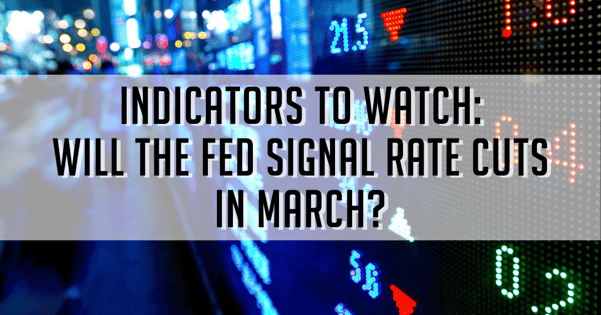Indicators To Watch: Will The Fed Signal Rate Cuts In March?

Market sentiment shows reduced confidence in the Federal Reserve's intention to carry out interest rate reductions, a crucial factor impacting both the economy and stock market direction.
The forthcoming release of two significant economic reports this week could significantly influence the inclinations of central bank policymakers and illuminate how the markets might respond to a shift in monetary policy.
Investors eagerly anticipate the initial estimate of fourth-quarter economic growth for 2023 from the Commerce Department, set to be unveiled on Thursday. Economists expect the U.S. economy to have expanded at a modest 1.7% rate during the final quarter of 2023, marking the slowest growth since the 0.6% contraction in Q2 of 2022.
Subsequently, the Commerce Department is scheduled to disclose the December reading on the personal consumption expenditures price index, a favored inflation indicator for the Fed. The consensus forecast for core PCE prices, excluding volatile food and energy components, anticipates a 0.2% growth for the month and a 3% growth for the entire year.
Of particular interest are the inflation figures, which, while approaching the Fed's 2% target, have not yet reached that threshold. Many Fed officials recently emphasized the significance of these data points in determining the Fed's future rate trajectory, highlighting the importance of clear evidence in addressing inflation concerns.
These releases coincide with a reassessment of the market's perception of the Fed's direction. As of Friday, trading in the fed funds futures market indicated minimal likelihood that the rate-setting Federal Open Market Committee would cut rates at its Jan. 30-31 meeting, according to CME Group data via its FedWatch Tool. Notably, the odds of a rate cut in the March meeting declined sharply from 81% a week ago to 47.2%.
This shift in sentiment follows encouraging data revealing a stronger-than-expected 0.6% growth in consumer spending for December and a decline in initial jobless claims to their lowest weekly level since September 2022. Moreover, various Fed officials, including Governor Christopher Waller, New York Fed President John Williams, and Atlanta Fed President Raphael Bostic, have indicated in their commentaries that, at the very least, they are not eager to cut rates, even if the era of hikes is likely concluded.
More By This Author:
Global Economic Headwinds: Navigating The Slowdown In 2024Best Year For Tech Stocks Since 2003, Uptrend Looks Intact
Inflation Report Fuels Speculation Of Earlier Fed Cuts, Equities Display Signs Of Fatigue
Disclaimer: Trading foreign exchange on margin carries a high level of risk, and may not be suitable for all investors. The high degree of leverage can work against you as well as for you. ...
more


